When my 7 year old daughter talks about Nigeria and going back, one of the things on the top of her list is Suya. My 4 year old doesn’t remember the absolutely delicious bits of spiced beef on sticks, cooked over hot coals by specialists – men from the northern part of Nigeria, where this is their trademark. Suya is one of those things which Nigerians in diaspora miss, just like the Dutch yearn for dropjes and stroopwaffels! And if you dig further, you’ll find most people have jars of suya spice in their pantries. I got my mum to bring me a small sack of the stuff which is stashed in the deep freezer!
Though the experts are from the North you’ll find them all over the country. Usually every area in a town will have a ‘suya spot’, with its ‘Mallam’, a name for the owner or controller of the joint. All day, every day, you’ll see the suya spots rife with activity from early morning till dusk, when orange trails blaze the skies with the setting of the sun.
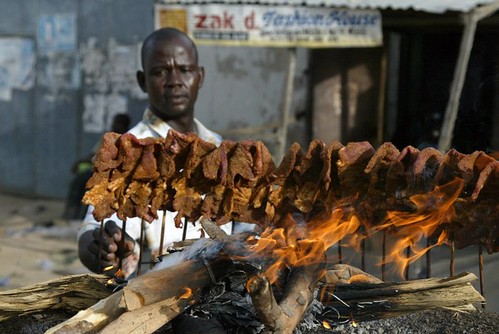 Photo credit: Pius Utomi Ekpei/AFP/Getty Images
Photo credit: Pius Utomi Ekpei/AFP/Getty Images
The early hours of the day are spent prepping the meat – beef from cows that have trekked from one end of Nigeria to the other, eating lush green grass along roadsides, drinking cool, refreshing waters from streams running north, south, east and west – talk about free-range cattle. These cows serve up the tastiest beef you ever ate (save for Argentina perhaps) , not to mention being organic :-).
The beef is sorted into groups – soft, tender cuts, chewy, hardier portions with fat, bony bits and more. Some chickens also join the fray, winged, giblets and gizzards. When preparations are all done, the meat is marinated in yaji, a dry rub of spices. Some versions have toasted peanuts (we call them groundnuts). Dried ground chilies, ground ginger and salt form the basic spices but as you can imagine, each mallam has his special blend, with special proportions and secret ingredients. Other add-ins might be garlic , onions, spice cubes and more.
Then, the meat is threaded onto stick, large pieces cut across the grain. Sometimes, I am reminded of birds and flapping wings as the flat beef pieces dangle from side to side.
About 4 pm, the mallams and their boys set up shop by the roadside, fanning the flame of glowing coals, while turning the meat on sticks gently. As customers troop to purchase suya by the stick, the boys load the stands with more stock. People ask for the type of meat they want, pick and choose specific sticks and then opts to eat it off the stick or have it stripped off the sticks and wrapped up in newspaper to take home. Both options are served with sliced tomatoes, red onions and chili pepper. All fresh.
In addition, extra spoonfuls of the dry spice rub are sprinkled over the meat or served on the side.
The July 2010 Daring Cooks’ Challenge was hosted by Margie of More Please and Natashya of Living in the Kitchen with Puppies. They chose to challenge Daring Cooks to make their own nut butter from scratch, and use the nut butter in a savoury recipe (not a sweet dessert). Their sources include Better with Nut Butter by Cooking Light Magazine, Asian Noodles by Nina Simonds, and Food Network online.
I love peanut butter in sauces because it brings flavour as well as acts as a thickener, for example when I make my peanut butter chicken, I don’t need to add cornstarch to thicken the sauce. Isn’t that fab?
For the challenge, I chose to make peanut butter and use that, mixed with some spices as a wet rub for beef and thus, homemade suya. But not suya like I make in the winter months in the oven, this time real suya, cooked over smoky briquettes in my back garden. Note, this is a spicy recipe but, and that is a capital BUT, you can adjust the spices to suit you, just like Ka did when she made a chicken version – and she’s Dutch! The sauce/paste can also be used on fish and veggies too……
In Nigeria, to keep peanuts fresh for as long as possible, they are sold in their skins after roasting, usually in little bags or in transparent glass bottles. When you want some, you cup a little in your hands, squeeze/ rub together to loosen the skin and then gently blow the soft, brown skin away. That works for small portions only though. To skin a large batch, the services of a kitchen tray are employed.
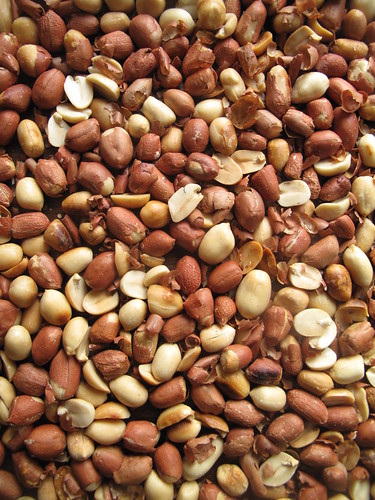
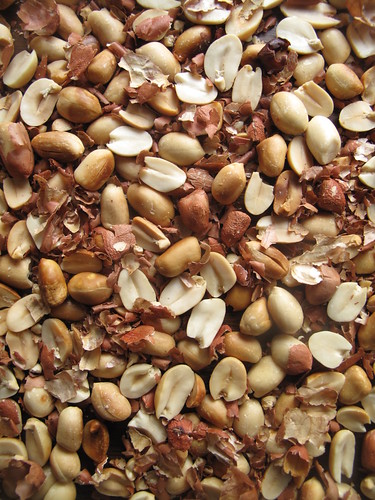


Steady, ready hands rub the skins off and then those same hands grab either end of the tray and flip the peanuts up in the air, moving back and forth, while blowing. What happens is the peanuts collect on one side and the skins on another, which you get rid off. A few repeats later, the skins are almost all off and you have your peanuts to enjoy! Like other nuts which are high in fats, store in the fridge or deep freezer to keep from going rancid.
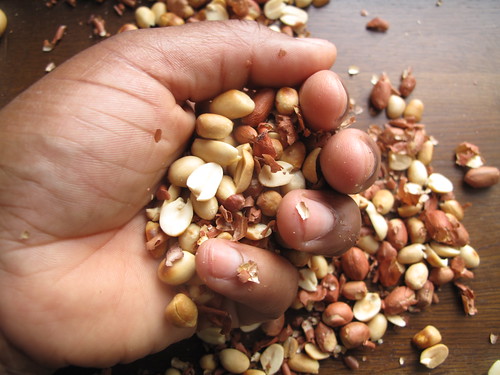
Peanut butter
Ingredients
1/2 cup roasted unsalted peanuts, skinned 1/4 – 1/2 cup vegetable oil Pinch of saltHow to
In a blender or food processor, grind the peanuts till they are crushed.
The ground nuts will stick to the sides of the mixing container, so using a spatula, loosen bits from the bottom and round the sides.
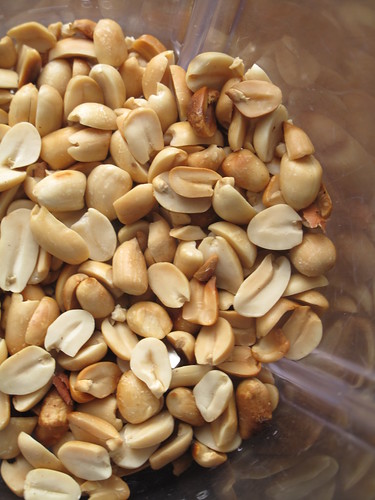
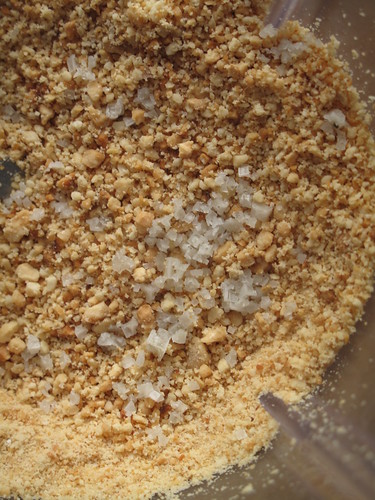
Then add oil, drizzling in along with a pinch of salt, blending till you get your required consistency.
I wanted a loose butter so I added more oil, till it reached a ‘thick cream’ consistency.
Suya
Ingredients, makes a dozen skewers/sticks
- Its easier to slice the beef if you freeze it for an hour prior to use
- Adjust the spices to suit your taste, my measurements are just guides.
How to
Make the peanut paste by combining peanut butter, chili pepper, salt, ground ginger and lime.
Stir well {My 4 year old helped me stir}.
 Adjust to taste and place beef slices in a large bowl . Pour peanut sauce over it, then using your hands, mix well ensuring the pieces of beef are coated with the sauce.
Adjust to taste and place beef slices in a large bowl . Pour peanut sauce over it, then using your hands, mix well ensuring the pieces of beef are coated with the sauce.
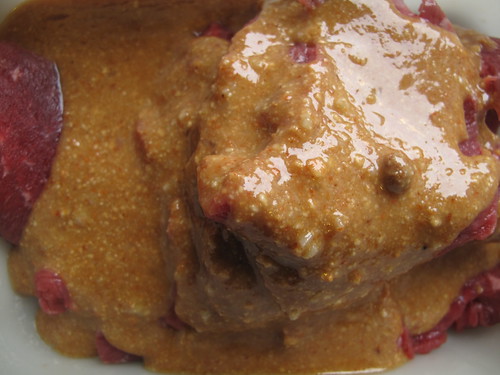 Leave to marinate for a few hours or overnight. I wanted to compare the taste of the suya using the peanut sauce versus the original suya spice (dry rub) and so I made two batches (and ended up with 2 dozen sticks, which are almost all gone!)
Leave to marinate for a few hours or overnight. I wanted to compare the taste of the suya using the peanut sauce versus the original suya spice (dry rub) and so I made two batches (and ended up with 2 dozen sticks, which are almost all gone!)
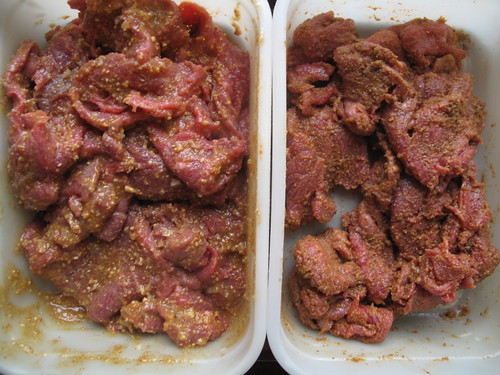 When ready to cook, thread them unto (soaked wooden) skewers, accordion-style so the meat is stretched out, not bunched up.
When ready to cook, thread them unto (soaked wooden) skewers, accordion-style so the meat is stretched out, not bunched up.
You can grill them in a pan, the oven or on the barbeque. I’ve done all of the above but the most authentic method of course, is over the fire.
Heat up your grill….
Till the coals are red hot and have a layer of grey ash. Carefully place the skewers on an oiled grill rack.
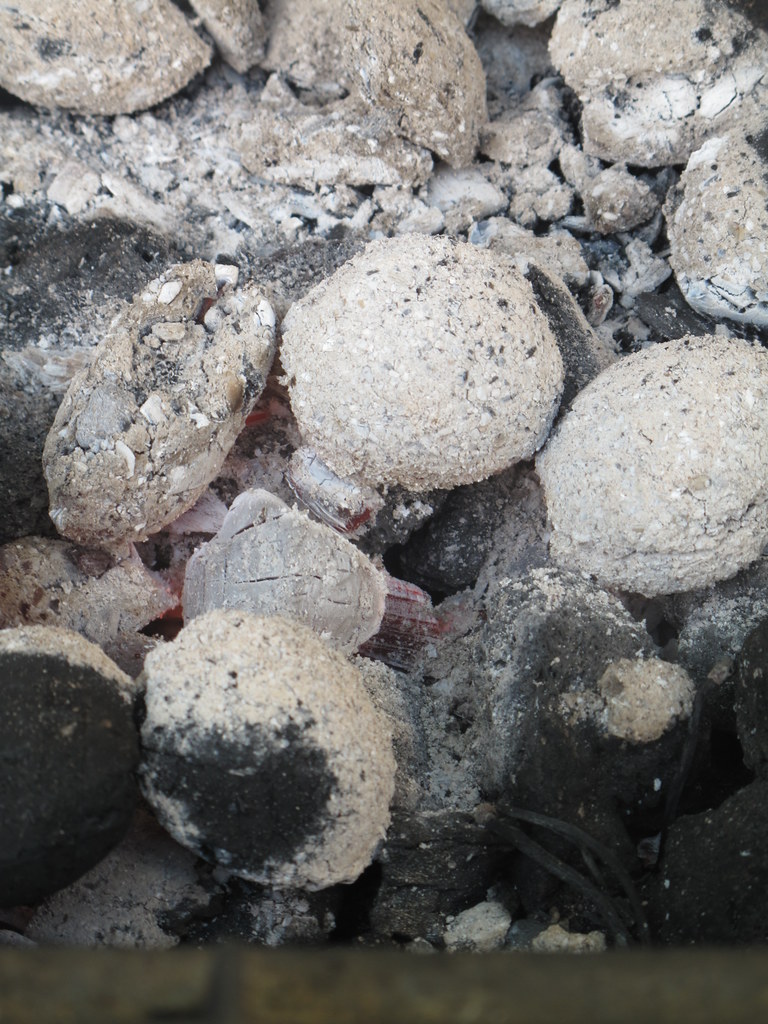 Let cook for a few minutes, and then turn over and cook the other side. The sticks should be cooked in less than 10 minutes, depending on how thick your slices of meat are.
Let cook for a few minutes, and then turn over and cook the other side. The sticks should be cooked in less than 10 minutes, depending on how thick your slices of meat are.
If they aren’t ready after 10 minutes, and you should notice a change in colour, take them off direct heat and let them cook slowly.
L: Suya with dry rub; R: Suya with peanut sauce
Now, we had them almost immediately for dinner. Majority preferred the suya with peanut sauce to that with the spice rub – it was moister but funny enough was not as tender as the latter. I think my omitting paprika gave the peanut-sauced version a dull brown colour, compared with the overall reddish speckled appearance of the original. Overall, we ate almost all of them up!
While everyone was happy to have food from ‘home’, my husband thought the beef wasn’t as tasty as in Nigeria. Anyhow, I left some pieces for a photo shoot and then later, he tried them, as did I – we both agreed letting them rest for an hour or two was essential – they tasted much better but still, the beef doesn’t taste like it would…..
I really enjoyed this month’s Daring Cook challenge (see more on the Daring Kitchen), especially since I’ve spent the last few weeks eating better (and making various nut butters) in a bid to transform our lives into healthier ones. On this note, I say a big thank to our hostesses, Margie and Natashya.
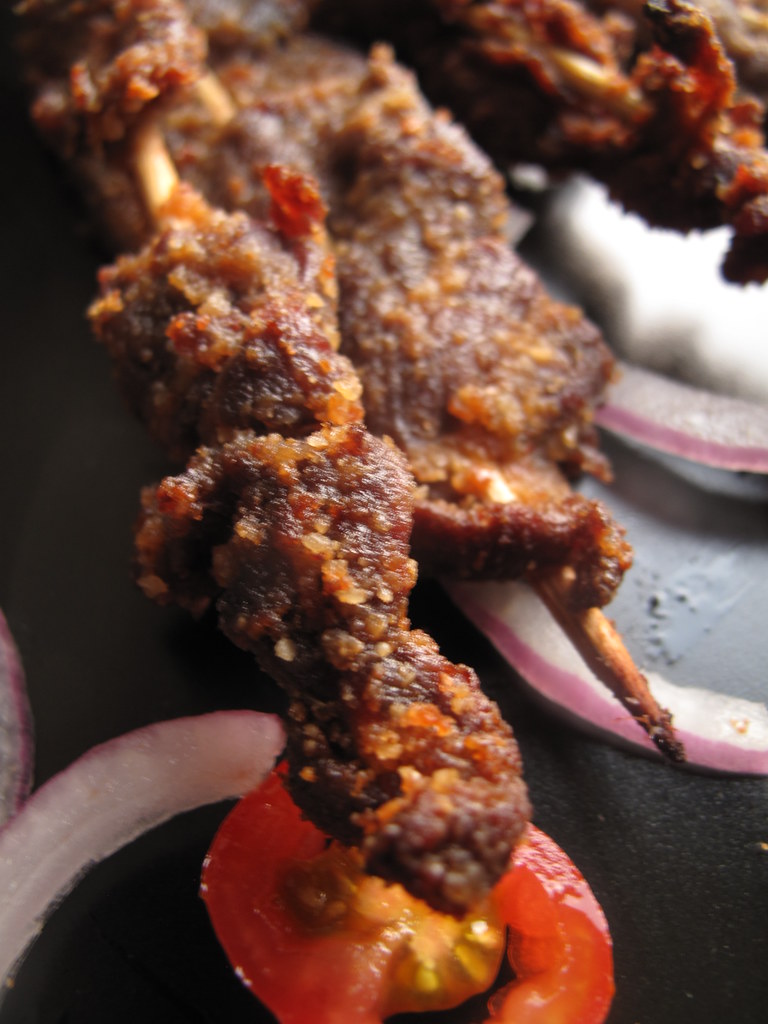 Have you ever had suya? Do you make marinades with peanut sauces? What’s your favourite meat or veggie on sticks?
Have you ever had suya? Do you make marinades with peanut sauces? What’s your favourite meat or veggie on sticks?

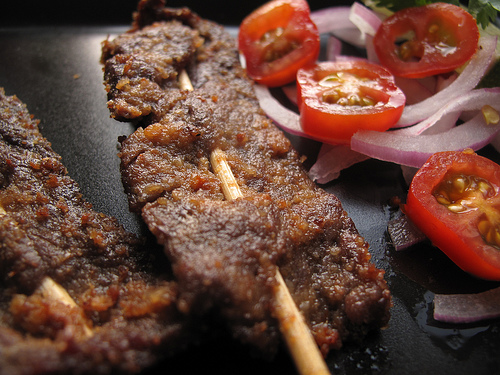

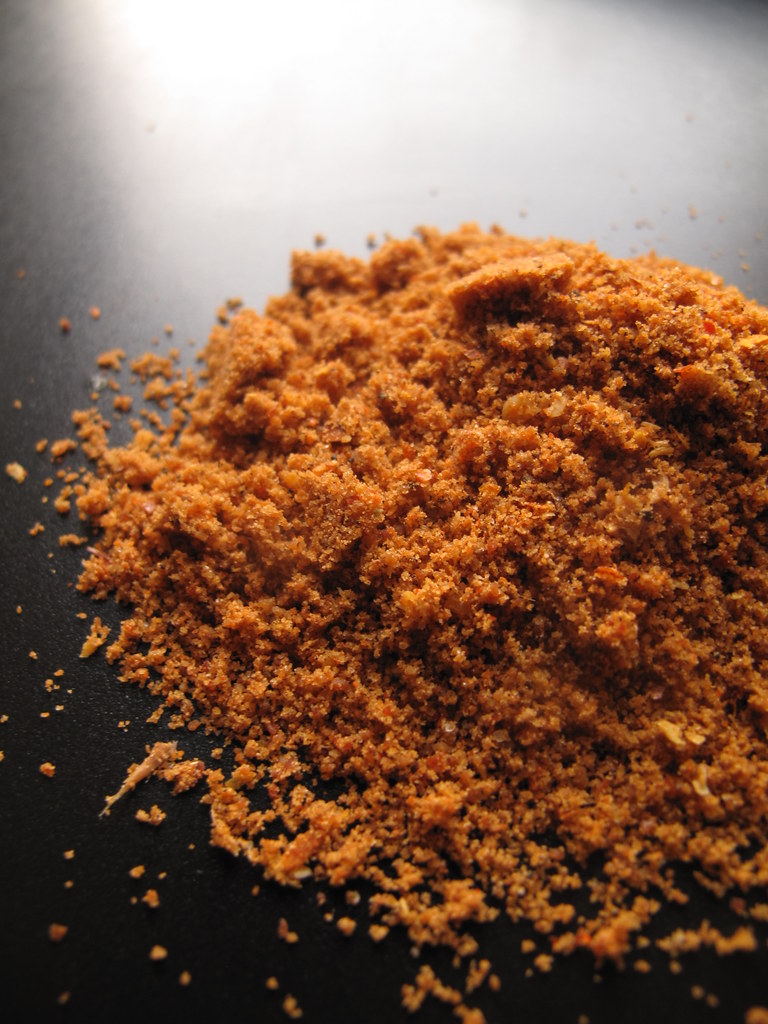
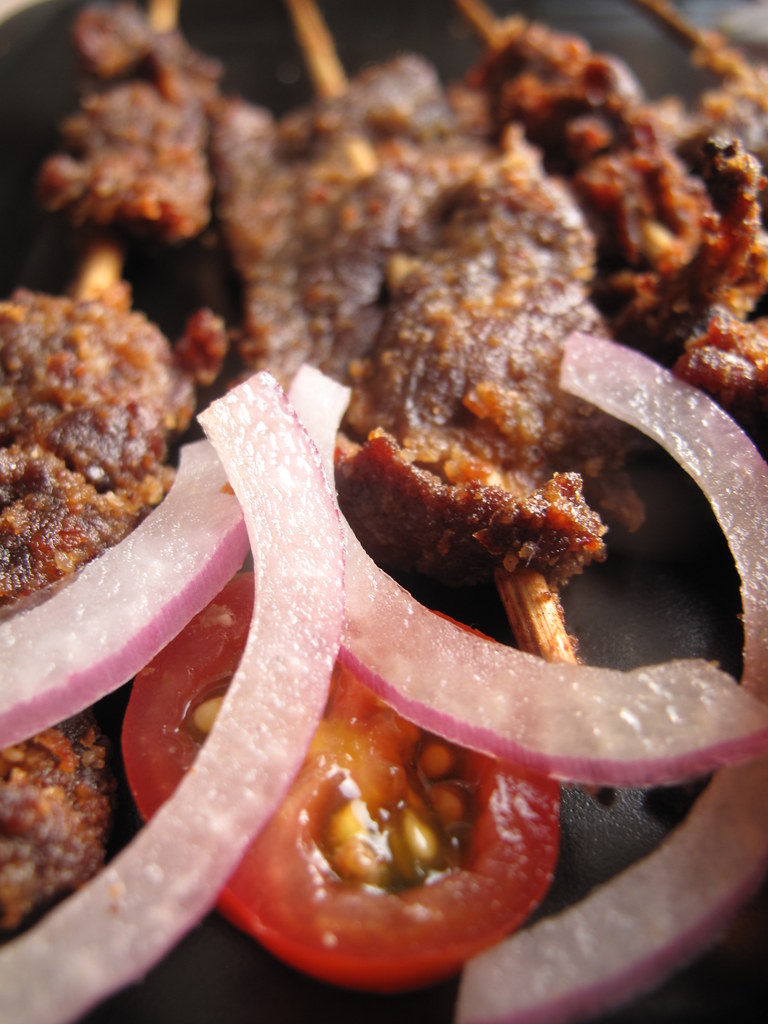
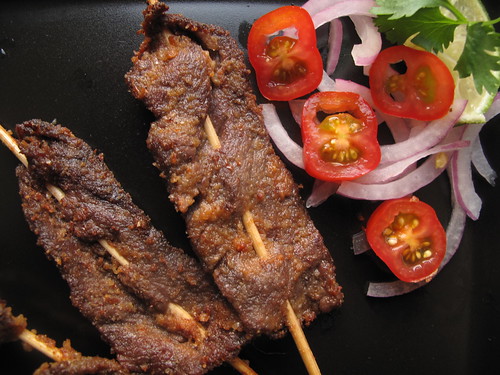
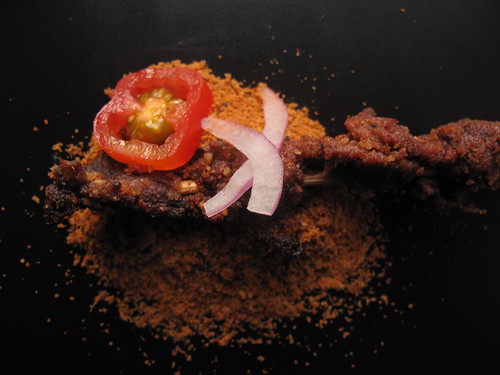
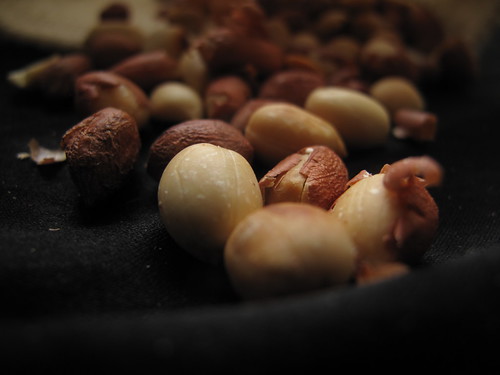

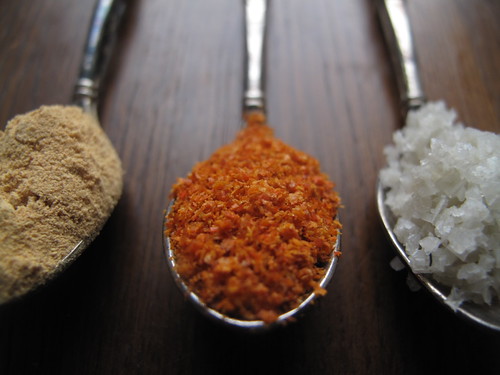
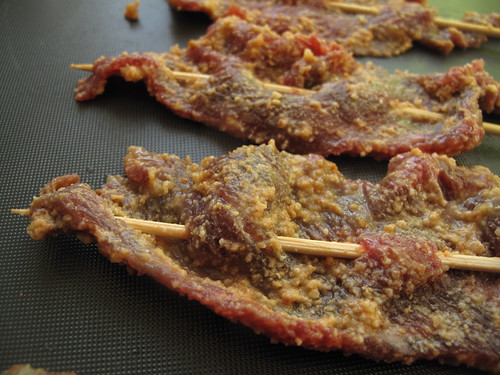
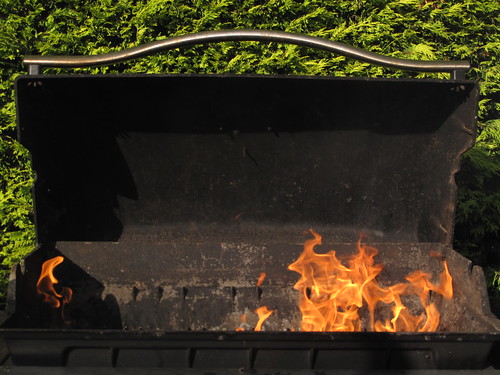
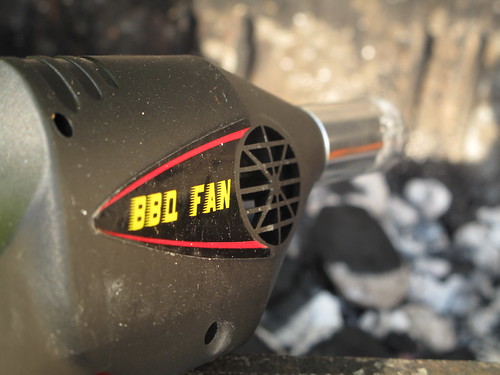

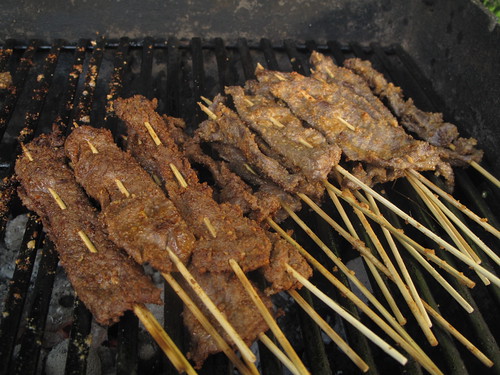

Leave a Reply